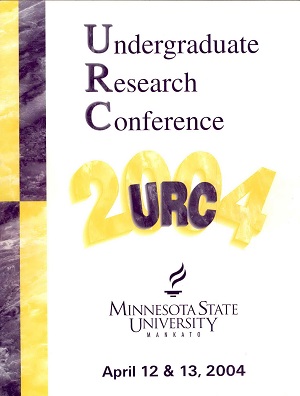Paleofluvial Study of Lower Cretaceous River Beds in Utah
Location
CSU 253/254/255
Start Date
12-4-2004 1:45 PM
End Date
12-4-2004 3:15 PM
Student's Major
College of Science, Engineering and Technology
Student's College
Science, Engineering and Technology
Mentor's Name
Donald Friend
Mentor's Department
Geography
Mentor's College
Social and Behavioral Sciences
Description
This study involved researching Cretaceous period (144-66 Ma) channel-fill deposits of the Cedar Mountain Formation in present day Utah. At many sites throughout Utah lithofacie descriptions, paleocurrents, and clast size counts were mapped and recorded in an effort to gain a further understanding of how the Sevier orogeny (mountain building episode) influenced the morphology of rivers along with their direction of flow. The direction was determined by the paleocurrents, while the distances of sites from the Sevier orogeny were determined by the size and angularity of the pebbles. Using the density and angularity of the pebbles we determined which were locally derived and which were transported in the rivers. It is our conclusion that the streams went from the Sevier orogeny, the present day Rockies, toward the Western Interior Seaway, the present day Great Plains.
Paleofluvial Study of Lower Cretaceous River Beds in Utah
CSU 253/254/255
This study involved researching Cretaceous period (144-66 Ma) channel-fill deposits of the Cedar Mountain Formation in present day Utah. At many sites throughout Utah lithofacie descriptions, paleocurrents, and clast size counts were mapped and recorded in an effort to gain a further understanding of how the Sevier orogeny (mountain building episode) influenced the morphology of rivers along with their direction of flow. The direction was determined by the paleocurrents, while the distances of sites from the Sevier orogeny were determined by the size and angularity of the pebbles. Using the density and angularity of the pebbles we determined which were locally derived and which were transported in the rivers. It is our conclusion that the streams went from the Sevier orogeny, the present day Rockies, toward the Western Interior Seaway, the present day Great Plains.




